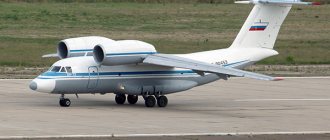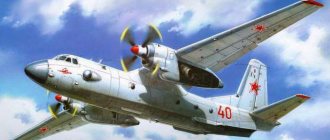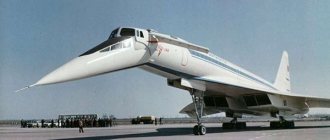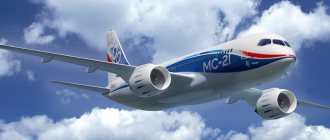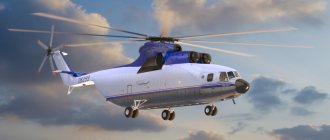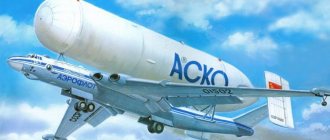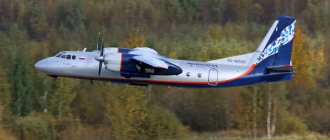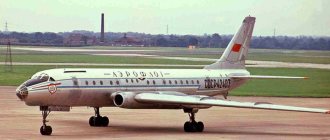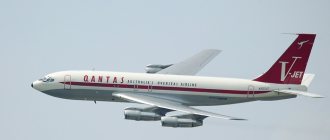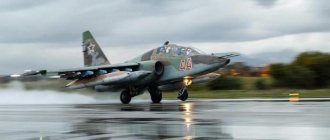The history of the creation of the Ju-52 transport aircraft
The development of the Ju-52 transport aircraft began in 1929 at the design bureau under the leadership of Ernst Zindel. The designers faced a fairly typical task - to create a cheap, reliable, easy-to-maintain and easy-to-manufacture aircraft. In this case, the actual flight data, flight speed and altitude were not of decisive importance.
In the same year, the project of the future Ju-52 was ready, initially a single-engine aircraft, largely repeating the design of another brainchild - the W-33 . However, it already contained an important feature - the design assumed the ability to install not one, but three engines at once without additional modifications.
The first prototype of a single-engine transport aircraft (under the designation Ju-52ba) was built in September 1930; cargo hatches were equipped in its left side and upper fuselage to facilitate loading and unloading of the aircraft. On October 13, 1930, the aircraft took off for the first time, and on February 17, 1931, it was demonstrated to the public at Berlin Tempelhof Airport. The first Ju-52/3mce (three-engine) first took to the skies in April 1931.
Canadian Airlines single-engine Junkers-52
We must pay tribute - despite the successful tests, the aircraft was not yet recommended for serial production, but continued to be tested in practice, for which purpose it was even put into pilot aircraft operation in June 1931.
Following the results of a year of work, many changes were made to the design of the Ju-52 - the airframe was modified, the wing was strengthened, and the engines were replaced.
Only in 1932 did deliveries of the aircraft to commercial airlines begin, and in the fall of 1933 the military version of the transport, the Ju-52/3mge, .
Production of the Ju-52 continued right up to the end of 1944 (!), in total more than 4,800 aircraft of various modifications were produced.
The civilian version was widely exported, and the military version was used in Italy, Austria (4 aircraft), Portugal (10) and Switzerland (3). Yes, this sounds quite unusual, but the familiar “fascist transport worker” (lovingly called “Aunt Yu” in his homeland) managed to fight so much that it would be enough for others - in the mid-1930s, Ju-52s made up two-thirds of all bomber aircraft Luftwaffe! Even in World War II, this vehicle, well-deserved by that time, fought on the side of Germany’s allies: Hungary, Romania, Finland.
Diagram of the German transport aircraft Ju-52
In May 1941, a German plane overcame Soviet air defense and landed in Moscow.
Most readers know about Matthius Rust, a German amateur pilot who, on May 28, 1987, on Border Guard Day, landed on Red Square, flying Hamburg - Reykjavik - Helsinki - Moscow. The scandal then turned out to be enormous. The boy - Rust was 18 years old in 1987 - overcame the entire air defense of the country undetected.
The Minister of Defense of the USSR, the commander of the country's air defense, 34 generals and officers were fired. Gorbachev
replaced almost the entire leadership of the Ministry of Defense, including the commanders of military districts. Documentaries have been made about this event, and there is information on the Internet. The story of a similar flight in May 1941 is much less known. We will talk about it in this article.
Last months before the war
The last six months before the start of the Great Patriotic War were strange. On the one hand, both the Germans and we knew about the inevitability of war. In Nazi Germany, the Barbarossa plan was announced in the army. The Soviet Union knew about this plan from Soviet intelligence reports. On the other hand, this period saw a surge in trade and economic relations between countries. Both countries pretended that they were not going to fight each other. Visits of high-ranking diplomats, continuously moving trains and ships from Soviet ports, loaded with food and raw materials. Industrial equipment came from Germany. The Germans sold samples of their equipment - planes and ships - to the Soviet Union. In Moscow and at airfields near Moscow in those days one could see Messerschmitts-109 and Junkers-87 and 88 with red stars on the wings, and in Leningrad there was a huge gray ship, on the side of which was first written “Tallinn”, and then "Petropavlovsk". It was the unfinished German heavy cruiser Lützev, which Germany sold to the USSR, and which was towed to Leningrad just before the war.
The air terminal building on Khodynskoye Field (photo: aviaforum.ru)
Panorama of the Central Airport (photo: aviaforum.ru)
Photo from a USSR magazine at a construction site in 1932 (photo: aviaforum.ru)
On this topic
1956
The first few apartments were raffled off among online voting participants in Moscow
The first winners of the apartment lottery in Moscow, who were chosen from among the participants in the online voting for the elections to the State Duma, have become known.
In those years, the Moscow international airport was the airfield on Khodynskoye Field. By the standards of the early 40s, it was a busy airfield. Numerous flights from Germany landed at Khodynka. Before the war, Germany had two types of transport aircraft - the long-range four-engine Focke-Wulf Fw-200 “Condor” passenger aircraft and the three-engine Junkers Ju-52/3m mid-range passenger aircraft. The latter was the main passenger aircraft of the pre-war Lufthansa.
Flight and order of the People's Commissar of Defense
It must be said right away that the Soviet side was informed about the flight. In addition to regular flights from Germany to Moscow, so-called off-schedule aircraft flew. The point is as follows. We said earlier that the USSR purchased aviation equipment from Germany, and had been doing this since the 20s. In 1940, the Soviet Union bought 30 aircraft from Germany, 10 of them Junkers-52. This aircraft was multi-purpose. Most of the Ju-52s were part of the Luftwaffe, where they formed the basis of the country's military transport aviation. There were several more regiments with Ju-52s, modernized into bombers. In civil aviation, the Yu-52 was one of the popular, as they now say, medium-range aircraft in the world. 32 countries operated passenger Junkers 52s. The Soviet Union was included in this list. Between January and April 1941, the Germans transported three Ju-52s to the Union. The transfer was carried out according to the same scheme. The flight was given off-schedule status, and after agreeing on the time, Junkers was allowed to fly in USSR airspace.
The Germans issued a notification for the May flight, but it did not indicate the date and time of the flight. On May 15, 1941, the off-schedule Junkers-52 crossed the border of the USSR and headed east. On board was a crew of three: Karl Marlot
- pilot,
Karl Steus
- flight mechanic,
Walter Tarnow
- radio operator. The plane flew along the route: Berlin - Königsberg - Moscow, with a flight over Bialystok, Minsk and Smolensk.
Air surveillance, warning and communications posts - VNOS - detected the plane, but did not transmit information about it to the appropriate air defense headquarters. Looking ahead, let's say that after landing, pilot Karl Marlot stated that he took off without permission from the Soviet side, since he did not receive the appropriate papers from Soviet representatives. Ultimately, the plane was allowed to land on Khodynka after information from Aeroflot that it was a non-scheduled aircraft built in Germany for the USSR.
Initially, at least outwardly, the Soviet leadership took the incident calmly. Lev Mehlis
sent
memo No. 2743ss to Stalin The note described in detail how air traffic controllers at the civil airports of Bialystok, Minsk and Smolensk accompanied the Yu-52 flight, which did not have permission to cross the Union border. At the same time, civilian dispatchers reported the flight to the air defense, they had reports from the VNOS posts, but did nothing.
The result of this note was the removal of air traffic controllers and severe reprimands to the leaders of the USSR Civil Air Fleet.
The second document that appeared as a result of this flight was the order of the People's Commissar of Defense of the USSR Semyon Konstantinovich Timoshenko
No. 1504-616ss dated June 5, 1941. When analyzing the flight of the aircraft, as it turned out, one of the VNOS posts mistook the three-engine Junkers-52 for a regular twin-engine DC-3. In the USSR, these aircraft were produced under license as Li-2. It imposed penalties on the command staff of the air defense and air force of the Western Special Military District. But it must be emphasized that no serious punishments were prescribed in this order. The country's authorities, at least publicly, tried to hush up what happened.
Arrests and executions
Despite the outward indifference, the system's reputation was severely damaged. It’s one thing to let a German intelligence officer cross the border of the USSR for photographic reconnaissance on the strictest orders of the Kremlin (the famous “Don’t give in to provocations”), and another to let what is essentially a civilian plane through. Digressing a little, let's say that in the period from October 1939 to May 1941, over five hundred such flights were recorded. A version immediately appeared (about other versions a little later) that the Germans decided to fly without permission in order to check the real effectiveness of the USSR air defense in the western direction.
On this topic
1119
Sergunina: Volunteers from 14 regions of the country came to Moscow for an internship
Heads of volunteer associations from 14 Russian regions arrived in Moscow to participate in the internship. Moscow volunteers will tell their colleagues about the programs operating in the city and the most successful volunteer practices.
After the order of the People's Commissar of Defense was issued, the NKVD began its investigation. It ended with the arrests of the leadership of the Air Force and Air Defense. Thus, on May 31, the commander of the Air Force of the Moscow Military District, Lieutenant General Pyotr Pumpur,
.
On June 7, the head of the Main Directorate of Air Defense of the USSR NPO, Colonel General Grigory Stern,
. He was shot in October 1941. At the same time, several generals and air defense and air force officers were arrested and shot. Although, for the sake of fairness, it must be said that Grigory Stern was in the development of the NKVD even before the Junkers flight. The fact of the flight and the lack of reaction from the Soviet air defense became the main, according to the investigation, evidence of an “anti-Soviet conspiracy and sabotage.”
One of the leaders of Soviet intelligence Pavel Sudoplatov
, in his memoirs “Intelligence and the Kremlin” wrote:
“In May 1941, the German Junkers 52 invaded Soviet airspace and, unnoticed, landed safely at the central airfield in Moscow near the Dynamo stadium.
This caused a stir in the Kremlin and led to a wave of repression among the military command.” This incident, albeit extraordinary, after the start of the Great Patriotic War was erased from memory and forgotten for 53 years. It returned to the center of public discussion in 1994, when writer and publicist Igor Bunich
expressed a fantastic version.
Bunich's version
Igor Lvovich Bunich was born in 1937. After graduating from the Leningrad Shipbuilding Institute, he worked in various “mailboxes” and served in naval aviation. In 1984, with the rank of lieutenant colonel, he was demobilized from the ranks of the USSR Armed Forces. He has written several books in which he examines the history of the twentieth century from very unusual angles. Suffice it to say that Bunich actively supported the version that Nicholas II
was not shot in 1918, but lived until the early 40s.
Ivan Bunich's version was that the purpose of the Junkers flight was to deliver and transmit to Joseph Stalin a letter from Adolf Hitler
. Surprisingly, Bunich even cited the text of this letter in his book “Labyrinths of Madness.” He did not name the source of the text, but the idea, as they say, went to the people. These quotes were used both in modern Russia and by foreign historians. In this letter, Hitler allegedly talks about the invasion of England, and plans to visit the USSR in July 1941. It all looks, frankly, like non-science fiction in the genre of alternative history.
In support of his version, Bunich cites three facts. Five days before Junkers’ flight to Moscow, a Messerschmidt-110 heavy fighter took off from a military airfield near Augsburg. Piloted by Hitler's comrade Rudolf Hess
. Over British territory, Hess jumped out of the plane with a parachute and surrendered to the British. What it was and why he did it is not known for certain. He was sent to a prisoner of war camp, and in Germany he was declared insane. At the Nuremberg trials, Hess first wanted to talk about the flight, and then stated that he had something with his memory. Perhaps these two flights were part of a single plan.
Marshal Zhukov
, in private conversations with writers
Lev Bezymensky
and
Elena Rzhevskaya
, he told what Stalin showed him, and let him read his letter to Hitler and his answer! Moreover, on June 14, a statement was published in the Pravda newspaper, which actually quoted Hitler’s words from the letter shown to Zhukov. There is no such letter in the Soviet archives...
The third fact looks rather like indirect evidence. The day after the Junkers landed on Khodynka, there was not a single name in Stalin’s visitors’ log. Stalin was at the Near Dacha. Bunich suggested that he was thinking about the situation.
Conclusion
To be honest, it’s hard to believe in Igor Bunich’s version. And the unhindered flight of Junkers-52 through the air defense of the Western Special District is a historical fact.
Design of the Ju-52 transport aircraft
The Ju-52 transport aircraft was an all-metal cantilever low-wing aircraft with a load-bearing corrugated skin, a rectangular fuselage and a truss structure.
The wing is straight, trapezoidal in plan, four-spar. The wing mechanization consists of flaps located under the trailing edge along the entire wing span. The tail unit is braced. The landing gear is non-retractable, tricycle with a tail spike (later a wheel); the possibility of installing a float or ski landing gear was also provided.
The power plant consisted of 3 piston 9-cylinder air-cooled radial engines BMW-132 with two-bladed JuPAK variable-pitch propellers. The fuel supply was located in 9 fuel tanks with an external protector. The side engines were mounted on the wing at a slight angle to the central axis of the aircraft.
In the passenger version of the Ju-52, two rows of seats (17 pieces) along the sides were installed in the cabin. Military modifications were armed with 2-3x 7.92-mm MG-15 and MG-17 machine guns, later with 2x 13-mm MG-131 machine guns and a 15-mm MG-151 cannon. The bomb load was placed in 3 bomb bays. The bomber could easily transform into a transport aircraft and back.
Transatlantic biplane with three Jupiter engines. Long-haul aircraft Sikorsky S-35
Home » Real story » Little-known and unrealized projects of aircraft and other flying equipment » Transatlantic biplane with three Jupiter engines. Long-haul aircraft Sikorsky S-35
Little-known and unrealized projects of aircraft and other flying equipment
byakin 06.26.2020 691
19
in Favoritesin Favoritesfrom Favorites 8
Transatlantic biplane with three Jupiter engines. Long-haul aircraft Sikorsky S-35
A small but interesting vintage article from Flight magazine, which I think will be of interest to colleagues.
The Sikorsky S-35 biplane, in which the famous French ace Captain Rene Fonck made his tragic attempt to fly across the Atlantic Ocean on the route New York - Paris, was designed, as the designation suggests, by M. Igor I Sikorsky was a Russian aircraft designer and pioneer of giant multi-engine aircraft. As previously stated in our magazine, Mr. Sikorsky has settled in the United States, where, under his direction, the Sikorsky Airplane Co., Roosevelt Field, Long Island, has developed several successful airplanes of various types during the past year.
The S-35, which we can describe and illustrate this week, was originally designed as a passenger and cargo aircraft, but some modifications were made to fly across the Atlantic Ocean. We will refer to them as necessary, since otherwise the story will not be about the car in its original cargo and passenger configuration, but in the transatlantic aircraft version.
SIKORSKY S-35 THREE-ENGINE BIPLANE: General view drawing of the standard commercial version of the Sikorsky S-35 three-engine biplane. The car for the transatlantic flight has been slightly modified
The S-35, which is made almost entirely of metal structures, is Sikorsky's largest and most modern aircraft and shares many similarities with some of its previous models. It is a three-engine biplane (one engine mounted in the forward fuselage) with a large upper wing and a much smaller lower wing.
The upper and lower wings have no sweep or offset and are attached to the fuselage using two M-shaped struts. The wings are connected to each other using two sets of struts to which the wing engines are attached, and two pairs of inter-wing struts connecting the ends of the outer parts of the load-bearing surfaces. However, on the transatlantic flight machine, a pair of struts were added between the engines and the wing struts, thus transforming the aircraft from a single-strut biplane into a two-strut biplane. This was done so that the machine could withstand the supply of fuel that it had to carry on such a long flight.
The airfoil used in the wing was specially developed by Sikorsky. The length of the horta and the airfoil are the same along the entire wingspan, with the exception of the tips, which are rounded and sloped. Ailerons are installed only on the upper wing. The chord of the upper wing is comparatively large, measuring just over 7 feet (2.2 m) in length. The airfoil is relatively thick and the main spar runs where it is at its maximum height.
The basis of the spar is a wall made of sheet duralumin and reinforced at the top and bottom with duralumin corners, which are riveted on both sides to the wall in its middle part. Located between the wing spars, the diagonal compression struts are square tubes made from the same material used in the fuselage. The diagonal struts are arranged in the form of an “N” turned on its side, in which parallel elements connect the upper and lower parts of the side members, and the diagonal one runs from the bottom of the front side member to the top of the rear side member. The entire wing structure uses internal wire braces of the conventional type.
The ribs consist of duralumin U-shaped profiles; the ribs are extremely simple and strong. The upper and lower rib flange pads are curved to approximate the airfoil of the wing and are then installed in the assembly jig where they are connected to each other using a U-shaped Warren truss. Then the rib is put on the spar and riveted to the duralumin parts, which rigidly fix the ribs and ensure reliable installation of the curved linings of the rib flanges on the trapezoidal profile spar.
The horizontal tail, which is attached to the upper fuselage spars, has the same design as the load-bearing surfaces. The stabilizer strength set consists of two duralumin spars and U-shaped duralumin ribs, but the diagonal struts consisted of pipes that had an angular profile rather than a square cross-section. The vertical tail has no fins and consists of three rudders: one central, mounted on the rear tail strut of the fuselage, and two side ones. Each of the lateral rudders consists of two parts located above and below the stabilizer. Each of the rudders is equipped with a compensating device common to Sikorsky, which represents a displacement of the axis of the rudder, which has a conventional aerodynamic profile. As a result, if the air flow behind the propeller of one of the side engines stops, the side engine located on the other side acts on the rudder in such a way as to counteract the thrust displacement, thereby significantly increasing safety and ease of control.
Since the S-35 was originally designed to transport passengers and cargo, its fuselage is of a closed type. The fuselage cabin is exceptionally large and roomy; its actual dimensions are 4 feet (1.22 m) wide, 6 feet (1.83 m) high, and 15 feet 6 inches (4.72 m) long. The cockpit is located in the forward fuselage, which slopes sharply down towards the central engine. Thus, thanks to this declination and the fact that the lower wing is relatively small, there is excellent visibility at all points of the aircraft. In the rear of the cabin there are duralumin doors that provide quick entry and exit.
The fuselage structure consists of a truss system of 1.5-inch (38 mm) square tubes. The vertical struts are attached to the fuselage spars using bolts and a simple reinforcement system that eliminates the need for welding and allows parts to be replaced if necessary. Part of the cabin is free of bracing, while the rest of the fuselage is reinforced with internal transverse bracing.
partially fabricated fuselage of a Sikorsky S-35 tri-engine biplane using duralumin tubes with a square cross-section
The aircraft's landing gear is of a split type and consists of two separate struts that are made entirely of steel and are spaced 18 feet 4 inches (5.59 m) apart. Each shock absorber consists of 24 liters of individual rubber rings that are interchangeable. Each of the main landing gear can be removed in a few minutes by removing just three bolts.
To fly across the Atlantic Ocean, the aircraft was equipped with additional landing gear. These struts were installed directly under the fuselage and had to withstand a huge load at launch. These additional landing gear were to be jettisoned as soon as the vehicle left the runway. Naturally, for a flight across the Atlantic, a large amount of gasoline is provided on the plane. The fuel was located in four tanks installed in the leading edge of the upper wing, in tanks installed in the engine nacelles of the wing engines, and in intrafuselage tanks. With the help of pumps, fuel is supplied to the wing tanks from where it is supplied to the engines by plane. The design of the fuel system provided for the placement of several fuel pumps. All tanks could be connected to each other or used separately, so that during the flight the danger of cutting off the fuel supply is minimal. The wing fuel tanks contain enough gasoline to fly at full power for four hours, and only these tanks are used for normal commercial flights.
SIKORSKY S-35 TRI-ENGINE BIPLANE: Preparing for a flight across the Atlantic Ocean - general view of Captain Fonck's aircraft at Roosevelt Field, New York
The power plant consists of three 400-horsepower Gnome-Rhone Jupiter air-cooled radial engines (manufactured in France under license from Bristol), installed in the nose of the fuselage and on either side of it in nacelles midway between the upper and lower wings.
THREE-MOTOR BIPLANE SIKORSKY S-35: This machine is equipped with three 400-horsepower air-cooled radial engines Gnome-Rhone Jupiter, manufactured in France under license from Bristol
The general characteristics of the standard Sikorsky S-35 cargo-passenger aircraft are as follows:
| Wingspan | 76 ft 0 in (23.17 m) |
| total length | 44 ft 0 in (13.41 m) |
| Height | 15 ft 18 in (5.03 m) |
| Wing area | 840 sq. ft (78.04 m²) |
| Empty mass | 7,200 lb (3,266 kg) |
| total weight | 13,800 lb (6,260 kg) |
| Specific wing load | 16.1 psi ft (7.3 kg/m²) |
| Specific load per power | 11.3 lb (5.13 kg) |
| Speed range (estimated) | 59-160 mph (95-257 km/h) |
| Cruising speed | 140 mph (225 km/h) |
| Flight speed with two engines running | 115-135 mph (155-217 km/h) |
| Service ceiling | 15,000 ft (4,572 m) |
| Practical ceiling with two running engines | 8,000 ft (2,438 m) |
| Rate of climb at ground level | 1100 fpm (335 m/min) |
| Rate of climb at ground level with two engines running | 400 fpm (122 m/min) |
The S-35 variant for flight across the Atlantic Ocean had the following changes:
| Upper wing span | 101 ft 0 in (30.79 m) |
| Lower wing span | 76 ft 0 in (23.17 m) |
| Wing area | 1095 sq. ft (101.73 m²) |
| Empty mass | 8,000 lb (3,629 kg) |
| Equipment weight | 490 lb (222 kg) |
| Fuel weight | 15,200 lb (6,895 kg) |
| total weight | 24,200 lb (10,977 kg) |
| Specific wing load | 21.8 psi ft (9.7 kg/m²) |
| Specific load per power | 19.0 lb (8.6 kg) |
source: “SIKORSKY S.35” “Flight” September 30, 1926, p.638-640
Modifications of the Ju-52 transport aircraft
- Ju-52ba is the first prototype with a V-shaped 12-cylinder liquid-cooled Jumo-L88a engine producing 800 hp. First flight October 13, 1930.
- Ju-52be - with a BMW VIIaU engine with a power of 685 hp. and a two-bladed wooden propeller (later four-bladed). Converted from the first prototype in early 1931.
- Ju-52/1m - single engine. In 1931-1935, 6 aircraft were manufactured. Ju-52bi - with a two-row Astrang-Siddley Leopard radial engine with a power of 800 hp, a float landing gear, an enlarged rudder, and a reinforced wing.
- Ju-52сai - passenger, with a BMW XIaU engine with a power of 800 hp, a cabin with 15 seats.
- Ju-52cao - with a Rolls-Royce Buzzard engine with 825 hp. In 1936, the Canadian Ju-52ce was converted.
- Ju-52ce - with BMW VIIaU engine and reinforced wing. 4 aircraft were manufactured (one of them on floats). 1 aircraft delivered to Canada.
Characteristics of Ju-52
A country:GermanyType:Transport aircraftYear of issue:1931Crew:3 personsEngine:3x BMW 132T 900 hp eachMaximum speed:290 km/hPractical ceiling:5900 mRange of flight:1300 kmEmpty weight:6510 kgMaximum take-off weight:10990 kg (9200 kg - normal take-off)Wingspan:29.25 mLength:18.90 mHeight:4.65 mWing area:110.5 sq.m.Weapons:1× 13 mm MG 131 machine gun, 2× 7.92 mm MG 15 machine gun, up to 450 kg bomb load (military version only)
- Ju-52/3mde - export for Bolivia with “Townend rings”, rectangular windows, no cargo hatches. In the summer of 1932, 2 aircraft were manufactured.
- Ju-52/3mfe - modernized with BMW Hornet A-2 engines, closed NASA type cowlings, exhaust manifolds, cockpit glazing design, fairings on the landing gear wheels, a passenger cabin with 17 seats, no fuselage connector behind the passenger cabin. In 1933-1934, 15 aircraft were manufactured. Ju-52/3mf1e is a flying laboratory of the DVS Institute. 1 aircraft was converted.
- Ju-52/3mg1e - with BMW.132E engines.
- Ju-52/3mg4e(Trop) (Ju.52/3mg9e) - tropical, with dust filters and improved cabin ventilation, reinforced landing gear, and a device for towing gliders. In 1942-1943, some of the aircraft were re-equipped.
- Ju-52/3mg5e(See) (Ju.52/3mg5eW) - float. It was equipped with Junkers floats (displacement 9.5 tons) or Heikel (11 tons). A staircase was installed at the entrance door, and handrails were installed along the fuselage under the windows.
- Ju-52/3mg8e(F) - airborne.
Junkers-52/3m(MS) - minesweeper
- Ju-52/3mho - with Jumo.205 diesel engines with a power of 550 hp. In 1934, 2 aircraft were manufactured for Lufthansa.
- Ju-52/3mlu - with Piaggio "Stella" X engines rated at 700 hp. (later replaced by Alfa Romeo 126RC.34 with 800 hp). In 1934, 1 aircraft was manufactured for Italy.
- Ju-52/3m(MS) - minesweeper. Half of the aircraft were equipped with a large duralumin ring mounted on struts under the wing and fuselage, with a winding through which a current of 300 A was passed. The other were equipped with KK-Gerat containers with 30 small charges for sweeping acoustic mines. Defensive armament consisted of 3 MG-17 machine guns (later 1 MG-151 cannon and 2 MG-131 machine guns). In 1940-1942, several dozen aircraft of various modifications were converted.
- Ju-52/3mnai - with Pratt-Whitney Wasp S3H1-G engines producing 550 hp. The composition of the equipment differed. In 1934, 3 aircraft were manufactured. Delivered to Sweden and Great Britain.
- Ju-52/3mreo - for work in high altitude conditions. It featured BMW.132Da (BMW.132De) engines with cylindrical hoods. Delivered to Peru and Ecuador.
- Ju-52/3mte - passenger with BMW.132G (BMW.132L) engines. Produced in the early 40s. Ju.52/3ml2 - export for Finland.
- CASA-352LA-1 - cargo and landing.
Float version of the ju-52 aircraft
Tasks and goals
The tasks of the minesweeper aircraft included searching, finding and destroying sea mines of any kind, as well as escorting ships through minefields. The mines exploded 300 meters from the aircraft, which, while minesweeping, was flying at low altitudes - from 20 to 50 meters above the water. During the war, carrier-based aviation was armed with about 70 converted minesweepers. These unpretentious and reliable machines were the workhorses of the German army. Junkers were so easy to re-equip that they were sometimes used without sweeping equipment as a means of transporting personnel and cargo.
Features of modern aircraft carriers
- Aircraft carriers - Comparison by country - History of creation
Varieties
Construction of aircraft carriers
The deck of an aircraft carrier as a type of passive protection for the ship
Launch catapult on an aircraft carrier
Aerofinisher - Aircraft braking system
Nuclear installation on an aircraft carrier
Jets for aircraft carriers
Participation in hostilities
Naval aviation operated aircraft until the end of the war. During World War II, mine warfare spread to new areas, and German troops needed a large number of minesweepers. Aircraft production grew. But by the end of the war, the Ju-52 Ms were almost all destroyed by Soviet troops and other allied armies.
The main places of military operations where minesweepers took part were the Baltic and the Black Sea. It was there that the mine war unfolded. In 1940 he made his first flight off the coast of Holland. In combat mode, the Yu-52 can fly up to 50 meters above water, and the electromagnetic trawl emitted waves, thanks to which mine detonators were triggered. After the first flight, a special air unit was created, where the Junkers became the main mine-detecting aircraft. An interesting fact happened in 1941. In the Baltic Sea, when capturing the Soviet part of the Baltic, German troops were faced with the fact that their ships could not pass through the Baltic. The movement of ships is hampered by areas of the Baltic Sea mined by Germany. The Junkers, together with other Do23 minesweepers, were forced to clear their own mines.
The aircraft were used from ground airfields off the coast of the Atlantic Ocean, as well as in the Black, Adriatic and North Seas. In 1944, 6 minesweepers operated on the Hungarian coast to clear mines in the waters of the Danube. In 1945, the planes stopped making combat missions, as the German troops were sorely short of fuel.

